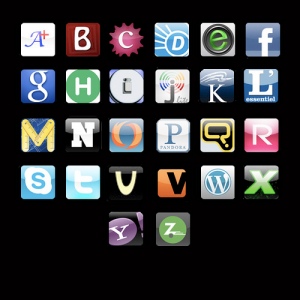There are a lot of amazing new educational apps out there, whether you're looking for native apps or Web apps, apps for your mobile phone, for your tablet, or for your laptop. There a number of app stores too where you can find and download them: Apple's iTunes and its Mac App Store, the Amazon Appstore, Google's Android Market, the Chrome Web Store, the Google Apps Marketplace, GetJar, and so on.
These app stores all offer products in a designated education category, ostensibly designed to make it easier to locate apps for learning and studying (as opposed to apps for productivity or for entertainment, although sometimes these categories do overlap). But having an education category doesn't necessarily make it easier to locate quality apps, as any cursory search there will quickly show you. Apps for teaching pre-schoolers the alphabet are grouped alongside those for studying calculus or human anatomy. Spanish for Beginners flash cards are found next to GRE test preparation.
Take, for example, a look at the educational apps in iTunes. The category highlights the top paid and top free apps, that is, listing them in terms of download and sales numbers. It also features "New and Noteworthy" applications, as well as "Staff Favorites." But these are a wide variety of apps: Shakespeare's Midsummer Night's Dream for your iPhone and an interactive Winnie the Pooh e-book.
This problem with very broad categorization exists outside the education category, too. If you search, say, for "science," you'll get some science magazines, some reference apps, and some not-safe-for-work results too.
iTunes does offer a ratings system, as do all the major app stores, whereby users can give apps zero to five stars and can write detailed reviews of their experiences with the app. But this too is frequently an unreliable way to discover new and interesting applications. Oftentimes, like websites such as Yelp, those who leave these reviews have either had terrible experiences with the app ("It crashes every time I use it") or rave about it uncritically ("This is my preschooler's favorite app.") Too often, there are so few reviews, it's hard to know whether customers' responses are typical or not.


